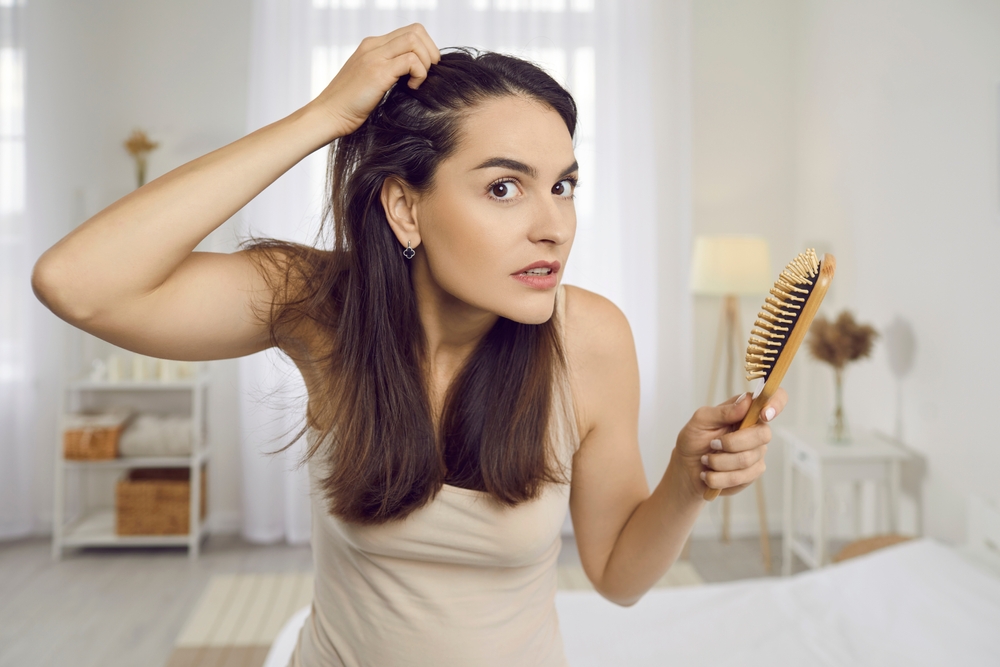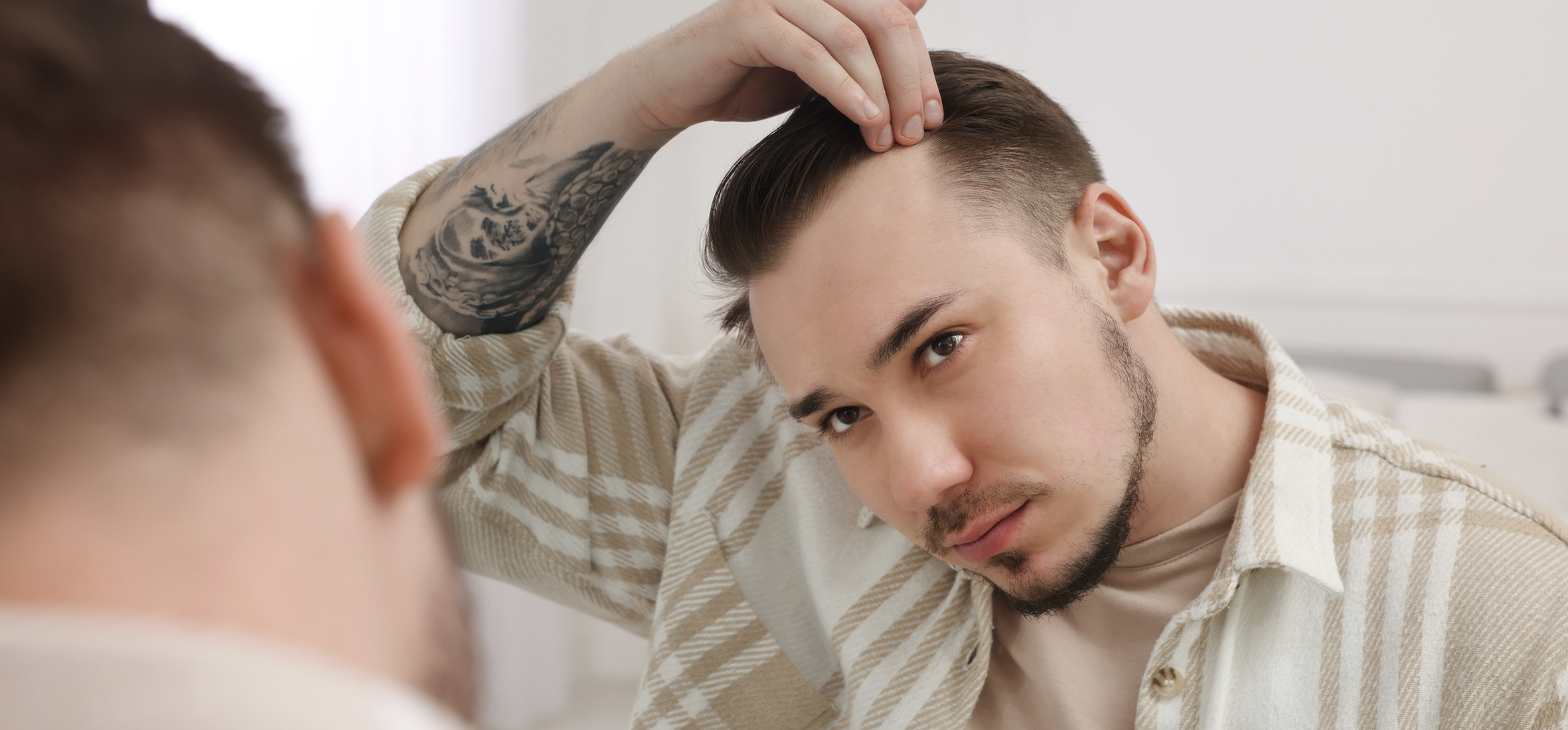Hair loss, particularly a receding hairline, is a common concern for both men and women. While it often begins as part of the natural ageing process, it can also be triggered by stress, hormonal imbalances, or genetics. The question many ask is: “Can a receding hairline grow back naturally?” The answer isn’t straightforward but depends on several factors including the cause of the hair loss, the extent of it, and the individual’s overall health. However, some natural methods may help slow down, stop, or even partially reverse the process.
Understanding the Receding Hairline
A receding hairline typically refers to the gradual thinning and loss of hair at the temples and forehead, creating an M-shaped hair pattern. It is most commonly associated with male pattern baldness (androgenetic alopecia), which is linked to genetics and hormonal changes, especially related to the hormone DHT (dihydrotestosterone). However, women can also experience a receding hairline, often due to hormonal shifts, stress, or certain medical conditions.

Hair loss becomes more permanent when hair follicles stop producing new hair. Once a follicle is dormant or damaged, regrowth is difficult. However, if the follicles are still active but struggling, there’s a chance to stimulate regrowth through natural methods.
Natural Methods for Supporting Hair Regrowth
- Nutrition and Diet
Hair health is directly linked to nutrition. A balanced diet rich in vitamins and minerals can support hair regrowth by nourishing hair follicles. Key nutrients that contribute to healthy hair growth include:

- Biotin (Vitamin B7): Known for strengthening hair and promoting growth.
- Zinc: Essential for repairing damaged hair follicles and balancing hormones.
- Iron: Helps oxygenate the blood, promoting circulation to the scalp and enhancing follicle function.
- Omega-3 Fatty Acids: Found in fish, walnuts, and flaxseeds, they reduce inflammation and promote a healthy scalp environment.
- Eating a diet rich in leafy greens, lean proteins, fruits, nuts, seeds, and fatty fish can improve hair health and potentially aid in regrowing a receding hairline.
- Scalp Massage and Circulation
Regular scalp massages can increase blood flow to hair follicles, stimulating them to grow hair. Massaging the scalp with natural oils, such as coconut oil, castor oil, or rosemary oil, may enhance the effect. These oils are believed to nourish the scalp and hair, potentially improving hair density over time.
- Herbal Supplements and Remedies
Certain herbs have long been used in traditional medicine to treat hair loss and promote regrowth. Some popular natural remedies include:
- Saw Palmetto: This herb is believed to block DHT, the hormone responsible for androgenetic alopecia, potentially slowing down hair loss and encouraging regrowth.
- Aloe Vera: Known for its soothing properties, aloe vera can reduce inflammation on the scalp and promote hair growth.
- Ginseng: Ginseng stimulates hair follicles and encourages new growth, potentially reversing the signs of a receding hairline.
- Reducing Stress
Stress is a significant factor in hair loss. Chronic stress can push hair follicles into a resting phase, leading to thinning and hair loss. Practicing relaxation techniques such as yoga, meditation, or regular physical activity can reduce stress levels, which may help in halting or reversing hair loss.
- Hydration
Keeping the scalp and hair follicles hydrated is crucial for hair health. Dryness can damage hair and slow its growth. Drinking enough water and using hydrating scalp treatments, like aloe vera or natural oils, can maintain scalp health and encourage hair regrowth.
Can a Receding Hairline Fully Grow Back?
While natural remedies may improve the health of hair follicles and potentially regrow some hair, it’s essential to set realistic expectations. Once hair follicles have shrunk or become dormant, they are much harder to revive. If the hairline recession is mild or in its early stages, natural methods may help slow down or slightly reverse the process. However, for more advanced hair loss, results are typically less significant.
Other Considerations
If natural methods do not yield satisfactory results, there are other options to explore:
- Minoxidil (Rogaine): A topical treatment that has been FDA-approved to regrow hair and slow hair loss.
- Finasteride (Propecia): An oral medication that inhibits DHT production and is often prescribed for men with androgenetic alopecia.
- Platelet-Rich Plasma (PRP) Therapy: A medical procedure where a patient’s own blood is injected into the scalp to stimulate hair growth.
- Hair Transplant Surgery: In more severe cases, this surgical option relocates hair follicles from denser areas to the receding hairline via hairline hair transplant.
Conclusion
While a receding hairline can be a source of concern, there are natural methods that may help stimulate regrowth, particularly if the hair loss is in its early stages. Focusing on proper nutrition, scalp care, reducing stress, and considering herbal remedies can support hair health. However, it’s important to remember that results vary from person to person, and more advanced hair loss may require medical treatments. Consulting with a healthcare provider or dermatologist is always a good idea when dealing with significant hair loss or considering any new treatments.





